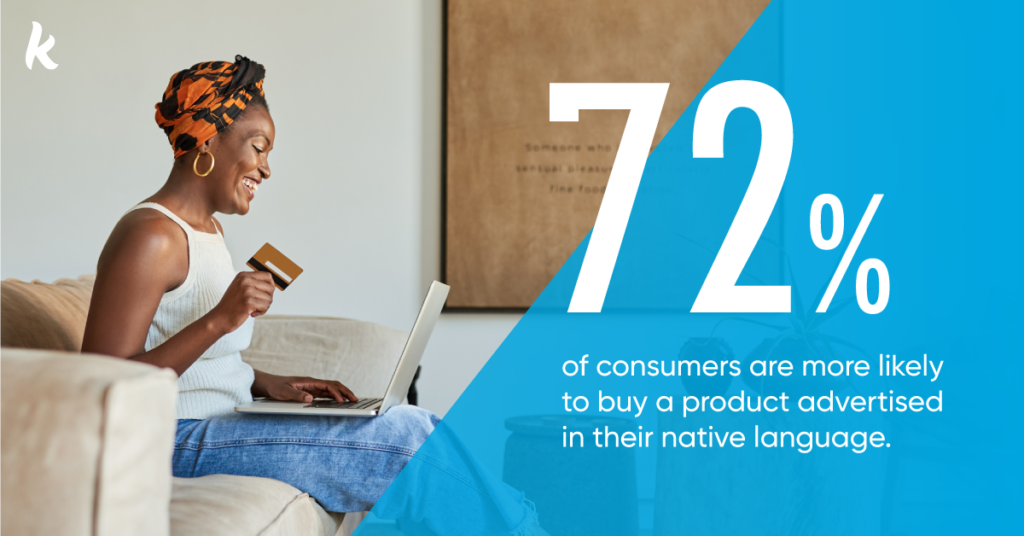
The e-commerce market is booming with tremendous growth and opportunities. Nowadays, everything is just a click away for the 3+ billion people using the internet – and spread across numerous languages. In recent years, the most popular languages used on the internet were English, Chinese, Spanish, Arabic, and Portuguese. Multilingual online traffic is higher than ever, so having ads in multiple languages helps convert browsers into purchasers.
Therefore, advertisers should implement multi-language Facebook ads to reach the greatest potential of customers.
Multi-Language Facebook Ad Feeds – Overview and Importance
A multi-language feed is one of the easiest ways a user can optimize their product feed for localized campaigns. Language localization on Facebook is a type of Facebook campaign ad that lets you automatically or semi-automatically advertise to specific searches or language preferences within multiple counties, regions, and countries.
Consider advertising in Europe – there are 44 countries with 24 official languages. If you only marketed in one language, you would be neglecting a significant percentage of consumers, missing out on so many opportunities.
Thanks to multi-language feeds, advertisers no longer have to create multiple ads for each targeted language preference; they can now create one ad with the ease of advertising in multiple languages.
The Value of Multi-Language Feeds Ads in native languages and dialects garner double the click-through rate that general ads in English or another common language have. Meaning, when consumers see an ad that is not in their preferred language, they usually do not click on it – likely because they don’t feel like the intended viewer.
Consumers tend to engage more with language-specific content from brands, not simply because the branded content appears in the consumer’s preferred language, but because consumers see this personalization as the brand showing added care for its customers. So, go the extra mile and show that you care about your customers by offering multi-language Facebook ads.
Let’s Talk About the Stats
A recent study conducted by Common Sense Advisory found that 72.1% of consumers spend most, if not all, of their time on websites in their native language. 72.4% of consumers also said they are more likely to buy a product when information or advertisements are in their native language. Most importantly, 56.2% of consumers said the ability to obtain information or advertisements in their native language is more important than price.

Now let’s dive into the ways you can put this information into practice for your advertising strategy.
Multi-Language Facebook Advertising – Key Takeaways
1. Advertising in Multiple Languages Made Easy An advertiser does not have to create different campaigns for each language they wish to advertise in. Use one central campaign and one catalog, then the multi-language feed will overwrite those parameters that need to be translated.
2. Reduce Customers Scrolling Past You or Reduce Bounce Rates Offering ads and Facebook content in multiple languages reduces the probability of consumers scrolling past your ad or page. The more people understand your ads and page, the more people are likely to purchase your products.
3. Parameter Translation An advertiser can add translations for parameters they wish to use. For example, it’s possible to overwrite the English landing page with a language-specific URL. This lets the advertiser direct the user to a custom landing page. Ultimately this should decrease the bounce rate and improve the customer experience.
4. Advertise at a Large Scale Multi-language feeds are scalable, meaning one can create a multi-language ad template and feed, then the parameters will dynamically populate the ads based on the user’s preferred language.
5. Increase Conversion Rate (CVR) As mentioned earlier, customers are more likely to click on an ad when it’s displayed in their preferred language – which has been proven to boost conversion rates.
6. SEO The use of multiple languages adds tremendous value to your website. The most successful way of producing organic traffic is to improve your website visibility by launching a translation subdirectory on a site that’s shown on different search engines. Creating inclusive content and multi-language Facebook ads using keywords and other SEO requirements automatically moves your page up on search engines and search results in all of the countries you want to advertise in.
If you liked this post, check out even more great content at koddi.com/blog.
You may be interested in
GET IN TOUCH
Ready to get started?
Don’t let your brand get lost in the noise. Partner with Koddi to unlock the power of commerce media and transform the way you engage with your customers. Our team of experts is here to help you navigate complexities and develop a strategy that drives results — no matter what industry – in as little as 45 days.